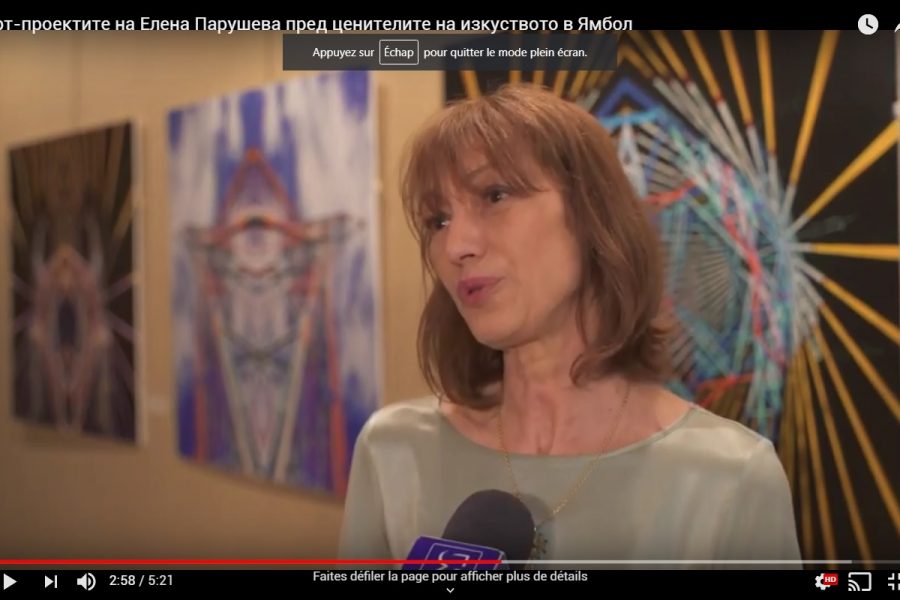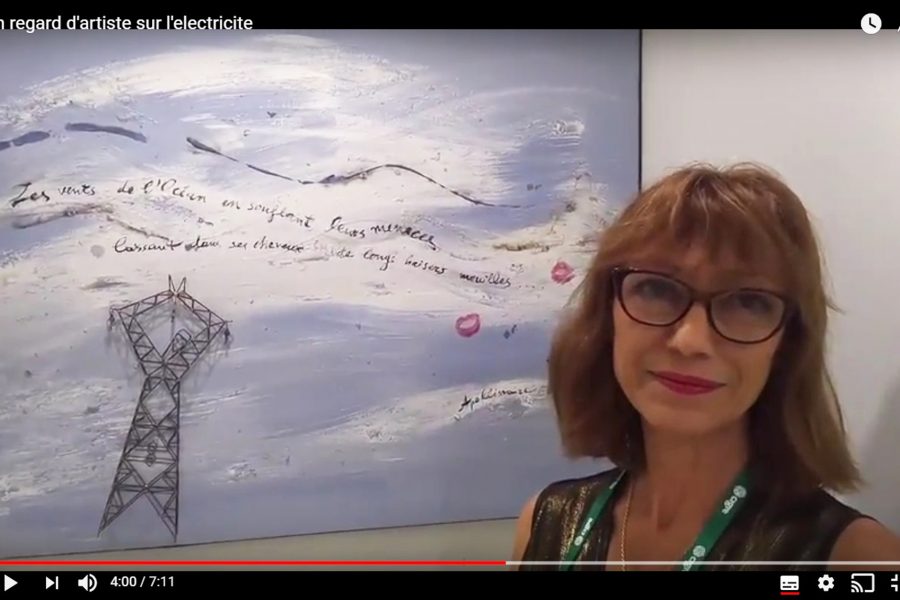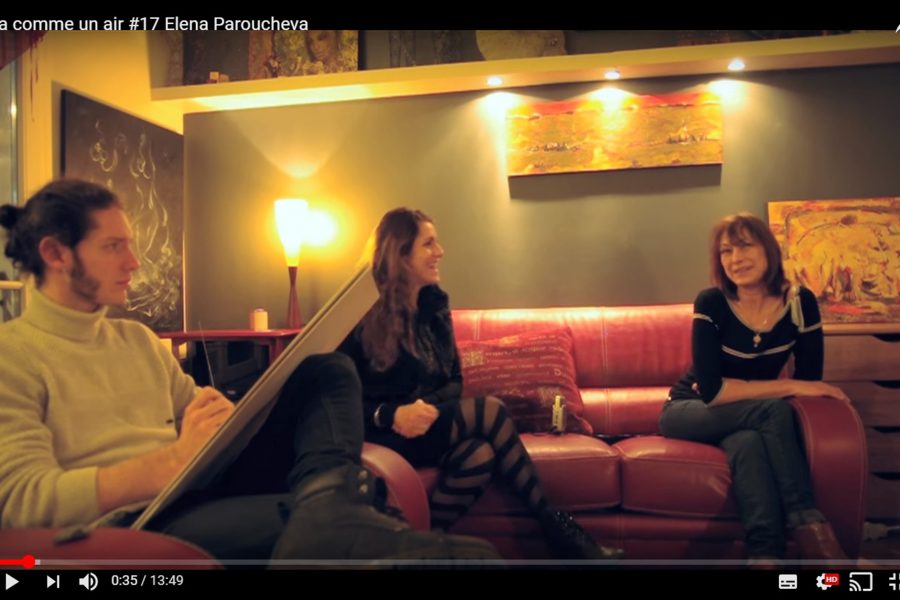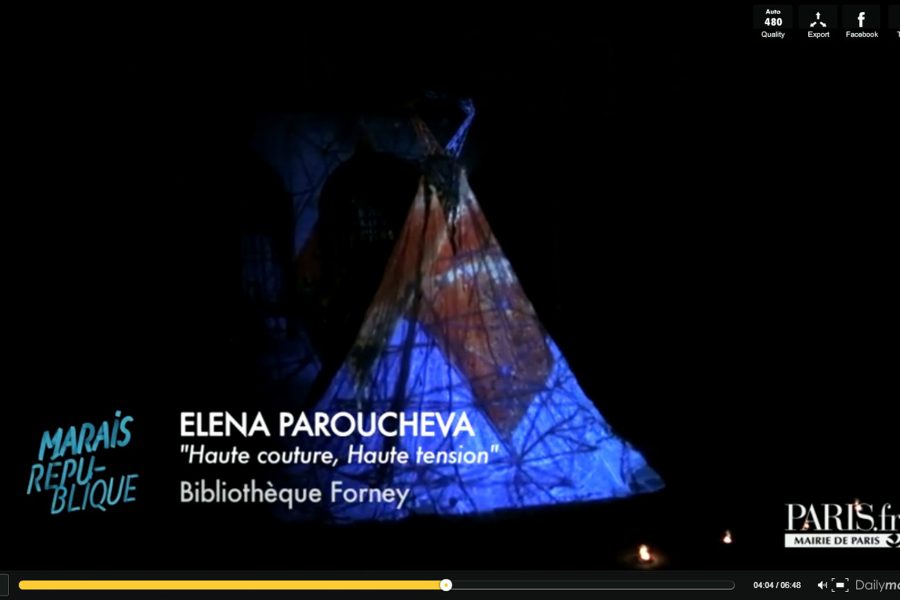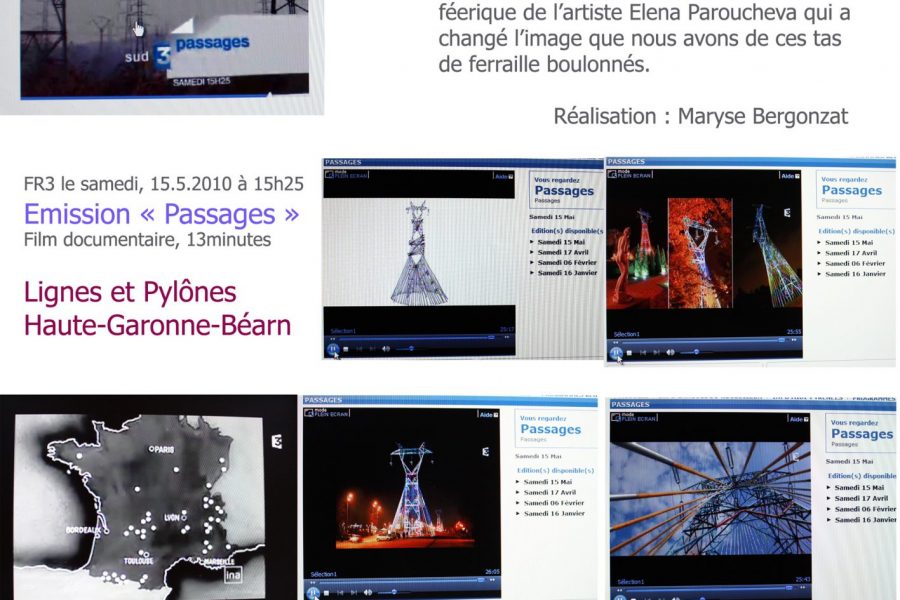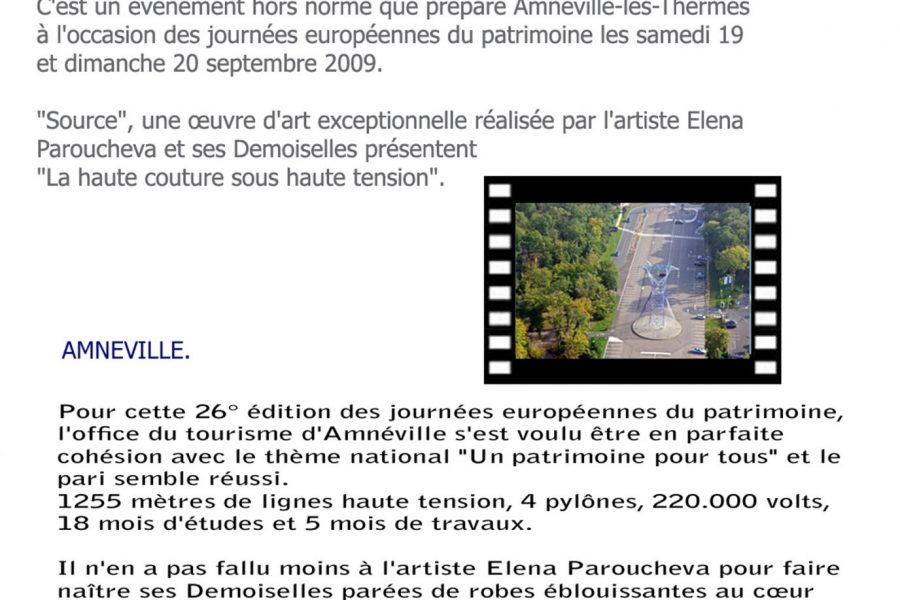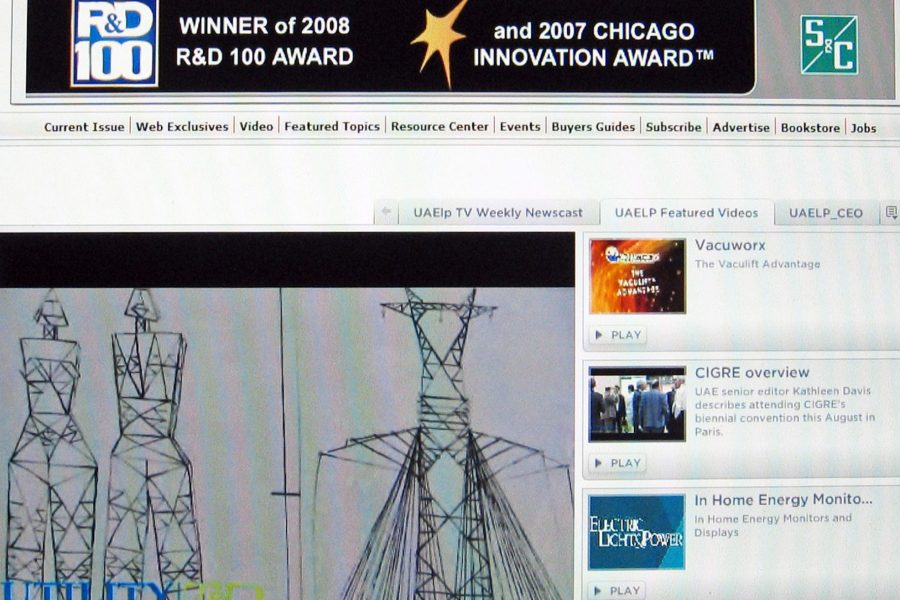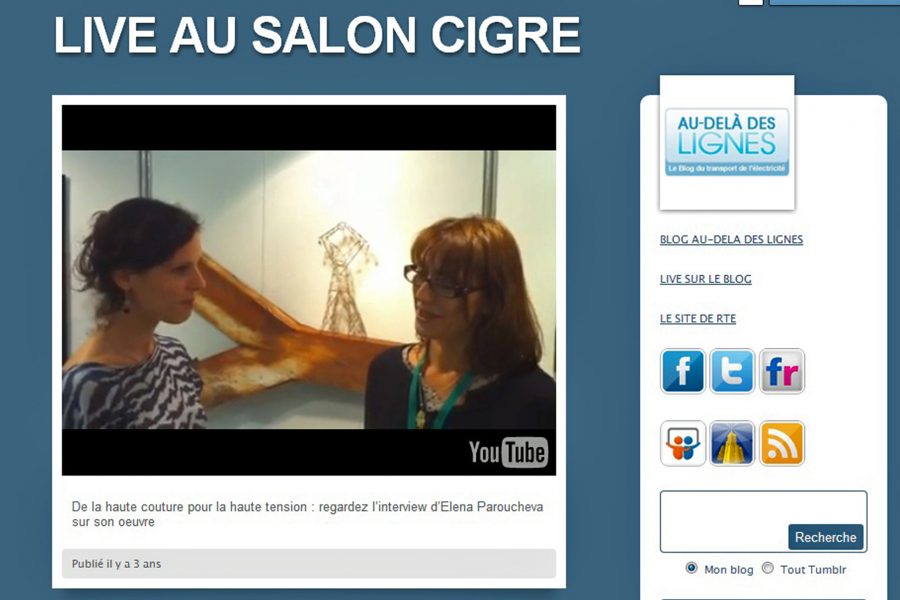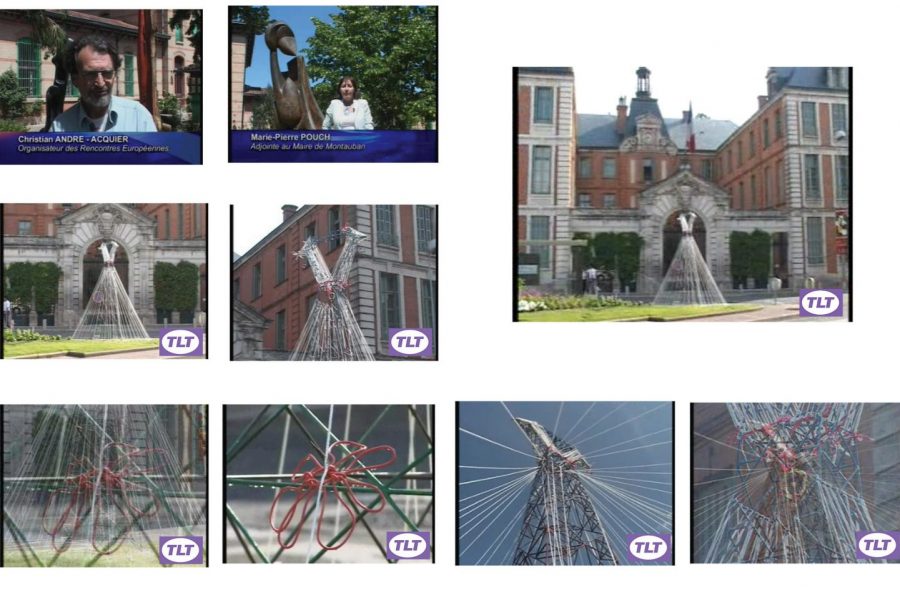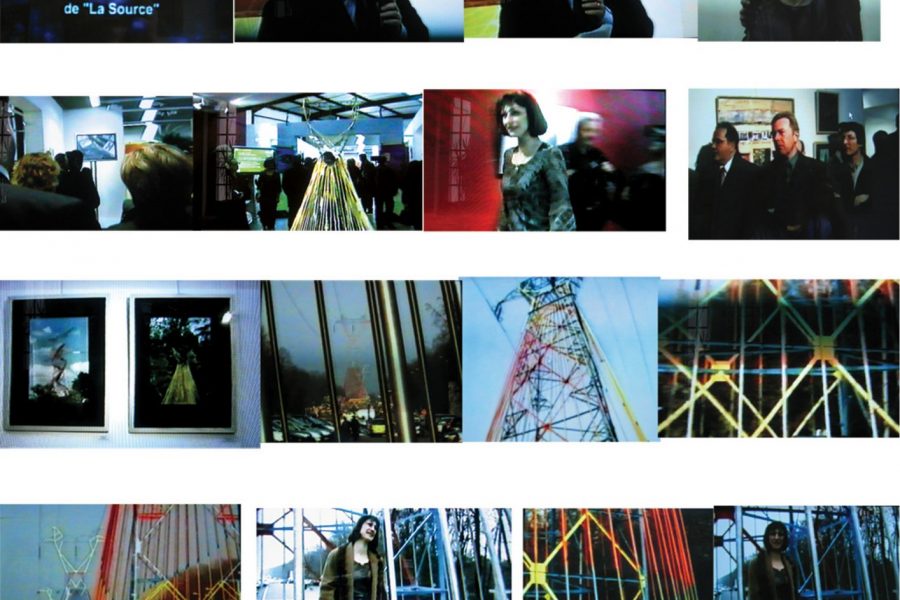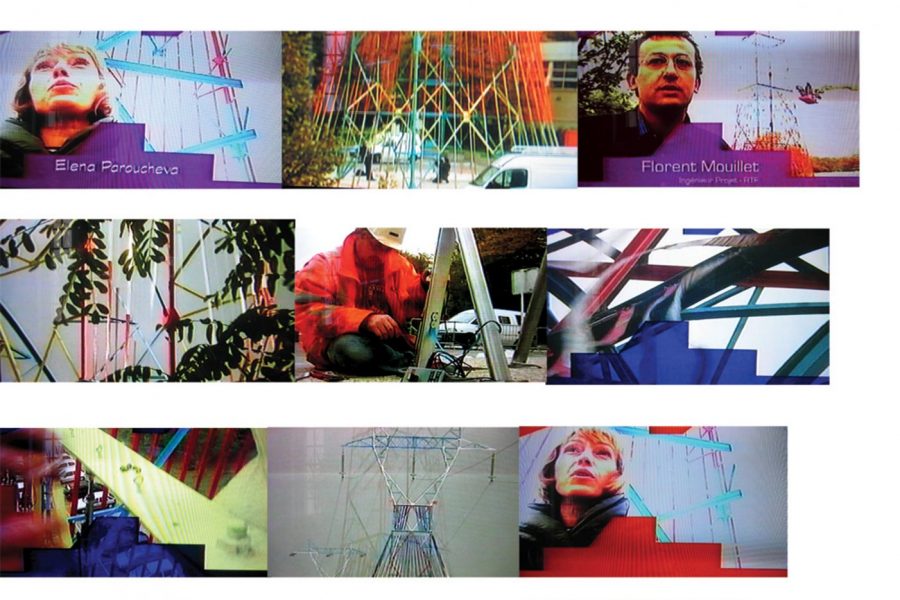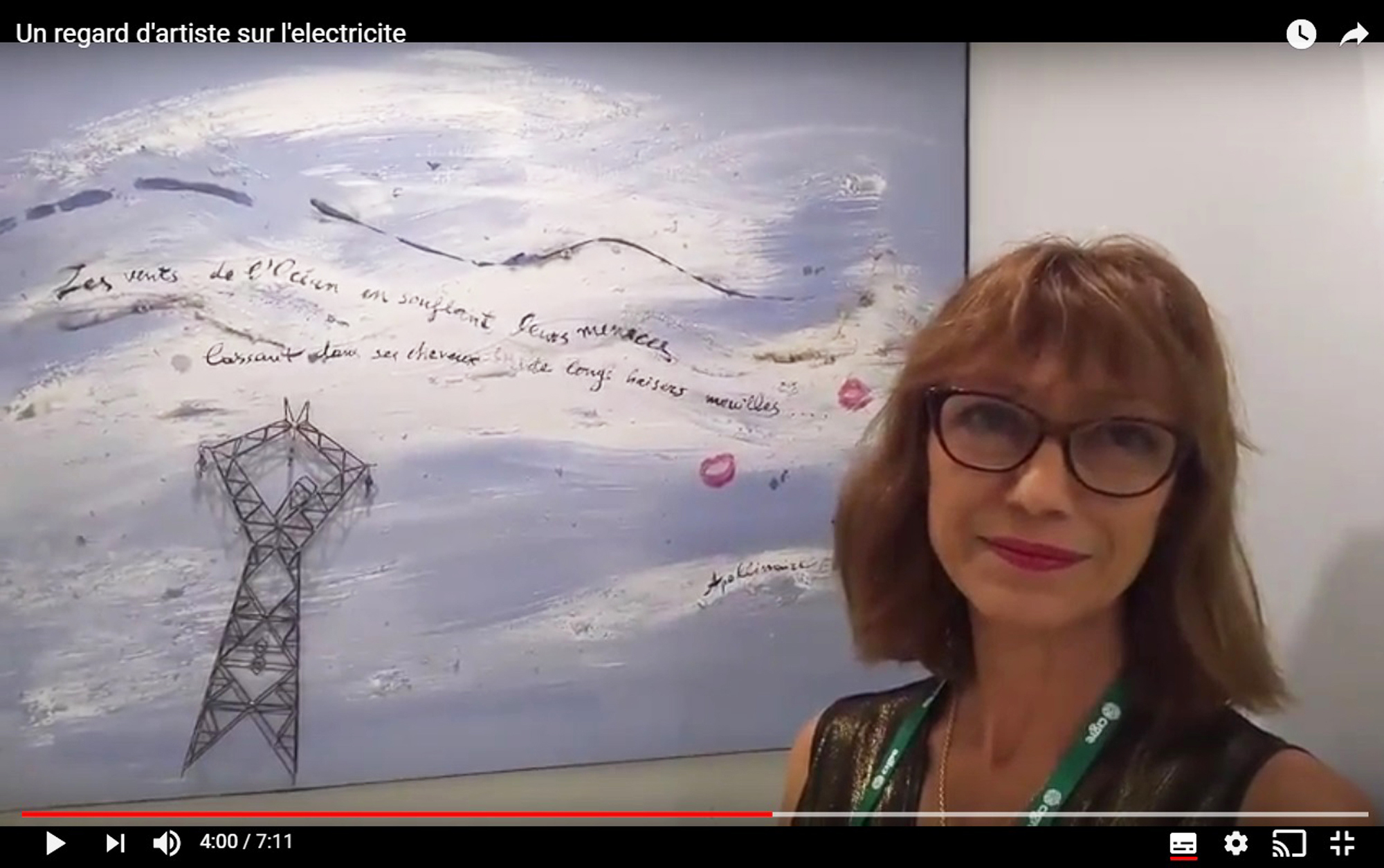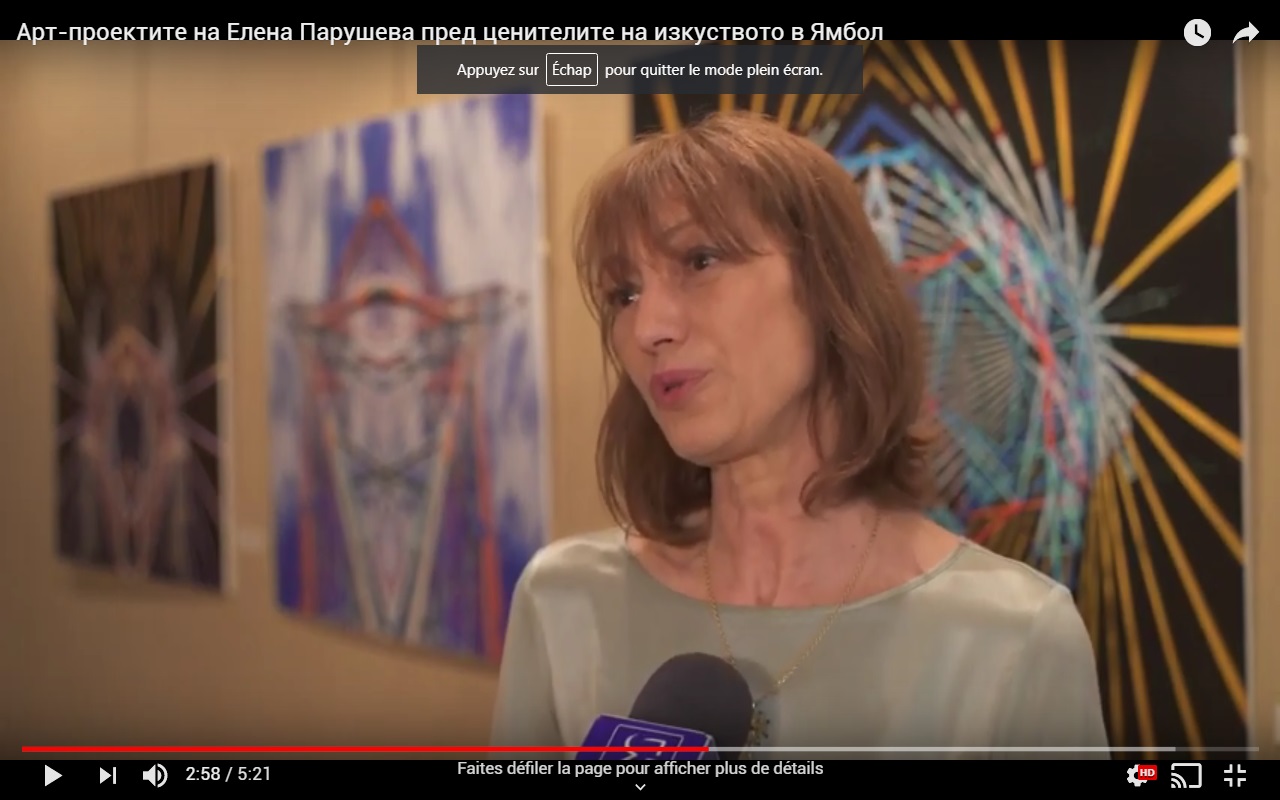
TV, Video
Electric art – Landscape towers for electricity pylons, telecom towers and wind masts.
Environmental impact of high – voltage overhead transmission lines and wind energy supports:
The Environmental artist Elena Paroucheva inaugurated in 2004 a unique artwork: “Source” – four pylons of a high voltage power line are dressed in colorful dresses, through a tourist and thermal sity visited by 5 million tourists a year. Then the French industrial patrimony is now a cultural heritage.
On September every year during the European Heritage Days , the artist is present for a guided tour. Visit to Amnéville les Thermes, France and see the website http://www.electric-art.eu/.
Artist: Elena Paroucheva
Sponsor and management: RTE – Network Transmission of Electricity, France.
The artist works in the field of the visual impact of overhead networks: power lines, wind energy sculptures – windmills, mobil phone antennas, lighting to highways, stadiums, public spaces … for over 10 years.
Elena’s pylons — sculptures are human pylons, beautiful ladies, birds, flowers, cathedrals … according to the landscape of the country.
2019 Studio Yambol TV, Bulgaria
2018 Canal Energia TV, Italia
“An artist’s look at the electricity” Interview with Elena Paroucheva during her exhibition at CIGRE 2018, by Agnese Cecchini, 31/08/2018 (IT)
1_2017_Ya comme un air :
Y’a comme un air: Interview #17, 02/08/2017 (Fr)
2_2013_Nuit blanche :
La Nuit blanche de Paris 2013: performance at Hôtel de Sens, by Mairie de Paris, 10/2013 (Fr)
3_2010_Passages
Lignes et Pylônes (Power Lines and Towers): FR3, “Passages” documentary film, by Maryse Bergonsat, 05/15/2010 (Fr)
Lines and Pylons These power lines that follow the roads or cross them, these assemblies of poles, pylons and cables that we make disappear from our images are here looked for their function. Reconciling the cables, changing the insulators, the large pylons are transformed into giant models, it is the fairy vision of the artist Elena Paroucheva who changed the image we have of these piles of bolted scrap metal.Director: Maryse Bergonzat
4_2009 7minTV
A la rencontre des Demoiselles d’Amnéville (To meet the Damsels of Amneville): TF1, 09/11/2009 (Fr)
5_2008-T&D-USA2
CIGRE overview: UAElp TV USA, Power Grid, CIGRE overview, by Teresa Hansen, 10/2008 (Eng)
6_2008_CIGRE
Au-delà des lignes (Beyond the lines): at CIGRE session, by C. Brochard, RTE, 08/2010 (Fr)
Electric art: pylons works of art
Elena Paroucheva is a visual artist, of Bulgarian origin. His style, Electric art, reinvents the world of electricity, with an artist’s and a woman’s look. On the occasion of her exhibition at CIGRE 2010, in Paris, she shows us a world of steel revisited.
Electric Art was first interested in the electrical networks, it now puts his brush on wind turbines or urban facilities that make up our landscapes.
“The man has left traces throughout his story, says Elena Parucheva. These traces compose (repetition with the preceding sentence) our memory, symbolize an epoch.
The electrical networks are part of it. I want to get them out of anonymity, to make them live differently. Have you ever seen them from a train or walking in the fields? I see them giants, who advance by themselves, walk, dancers … The landscape is cut behind them, and their infrastructure creates a graphic rhythm. These visual games serve as my inspiration to turn these steel structures into works of art.
My universe is in fact very contrasted, very lively and very sweet. On a daily basis or in my workshop, I juggle with this diversity, and it is the desire to test that guides me. I use velvet materials, in which metal and steel sink. I also use painted wood, and I incorporate fragments into the sculptures. Sometimes, metal materials play with each other. In the “Melina” sculpture, for example, I recycled letters from the Bulgarian brand Cacaobarry, which fell once the company closed about two years ago. It was an extremely strong moment, and these traces of a story, I associated with others, like the pylon. He is also a symbol of an era. From there, I imagined a new creation.
I am attached to what surrounds us. To create is to leave a trace of which one is proud, and which says a little more about our cultural identity. Art transmits a part of our memory, with the dough of the imagination. ”
7_2005_TLT_TV :
Rencontres Européennes de Sculptures (European sculptures get together): TLT Toulouse, 06/12/2005 (Fr)
8_2004_ATV:
Inauguration de Source (Inauguration of Source): FR3, News, 02/18/2004 19h30 (Fr)
9_2004_Abracadabra:
Source: ATV, eight days in a row, 02/18-25/2004 (Fr)


